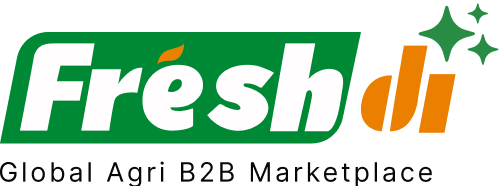Introduction – Germany’s Soybean Market: A Quantitative Overview
Germany plays a dynamic role in the global soybean landscape. While the country isn’t a top producer like Brazil or the U.S., it has carved out a significant niche in Europe’s soybean ecosystem—both as a processor and importer. In 2022, Germany produced approximately 120,500 tonnes of soybeans, a 13% increase from the previous year. Although that only ranked Germany 39th globally, it signals a growing domestic effort, especially in regions like Bavaria and Baden-Württemberg.
Despite this rise in production, Germany remains a heavy importer—with over 3.19 million tonnes of soybeans brought in during 2023, primarily from Brazil and the United States. These imports feed Germany’s robust livestock and food processing sectors, where soy derivatives are in high demand.
Export-wise, Germany is gaining traction, particularly in soybean meal. Between July and November 2024, exports rose 13% to hit 834,000 tonnes, mostly sent to EU neighbors like the Netherlands and Denmark.
With soybeans accounting for 65.2% of the $4 billion oilseeds market in Germany—valued at $2.6 billion in 2024—it’s clear that soybeans are more than a commodity. They are a strategic agricultural asset.
Deep Dive – Key Production, Export Statistics & Market Signals
Let’s talk numbers—and what they mean.
Production Metrics
Germany’s soybean production has grown tenfold since 2012. In 2022, it reached 120,500 metric tons. Forecasts project continued growth, with expectations of 117,720 tons by 2026. Though a slight dip is expected short-term, the average growth rate of 4.5% annually speaks volumes about long-term potential.
Export Performance
Germany exported 28.25 million kg (or 28,250 tonnes) of soybeans in 2023, generating $26.77 million in revenue. However, this marked a 37.79% drop in volume year-over-year. While some sources report slightly different figures—like $20.41 million—it’s clear exports are under pressure.
Top destinations? Hungary, Belgium, the Netherlands, and Poland.
Market Demand
The local soy protein market is valued at $306.43 million (2025) and is set to grow to $372.53 million by 2030. In 2019, total net consumption of soybeans was 305,000 tonnes, while all soy products combined (beans, oil, meal) hit over 4 million tonnes.
Germany still imports 70–75% of its soy needs, which makes it a prime hub for international suppliers and B2B matchmaking platforms like Freshdi, where businesses analyze RFQ volumes and supplier trust metrics to make informed buying decisions.
Top 4 Verified Soybean Suppliers in Germany – Leading Exporters by Volume
These suppliers stood out in Week 10 of 2025 for their verified credentials, consistent export performance, and positive reviews on platforms like Freshdi.
1. Global Trade DE GmbH
- Specializes in high-quality natural soybeans for both food and feed.
- Strong presence in Central and Eastern Europe.
- Known for fast delivery and reliable contract fulfillment.
2. LINK-EXPO
- Offers a versatile product portfolio including soybeans, sugar, and grains.
- A preferred choice for bulk orders across the EU.
- Praised for responsive customer service and scalable logistics.
3. agriculturalprogmbh
- Specializes in refined soybean oil, catering to industrial and culinary uses.
- HACCP and ISO-certified operations.
- Strong export links to Eastern Europe and North Africa.
4. Bruckmann GmbH
- Known for premium yellow soybeans.
- Non-GMO options available.
- Strong in sustainable sourcing and traceability.
Dynamic Ranking Note: Rankings on platforms like Freshdi are updated weekly and reflect real-time trade volumes, buyer feedback, and RFQ activity. Suppliers of the Month or Quarter may shift based on recent performance.
Market Navigation – Statistical Trends, Pricing Analysis & Export Dynamics
Production and Yield Insights
In 2024, Germany’s soybean cultivation area shrank by 9% to 40,600 hectares. Yet, yield improved by nearly 7%, resulting in a harvest of 124,500 tonnes—just a minor drop compared to 2023. This suggests that German farmers are becoming more efficient, even with smaller plots.
Import Dynamics
Imports rebounded in 2024, with the U.S., Brazil, and the Netherlands being the top sources. The average import price dropped by 16.5% to $526 per tonne, offering budget relief for domestic buyers.
Export Activities
Exports surged in 2024, with the Netherlands taking the lion’s share. Interestingly, the average export price fell 15.5% to $708 per tonne, indicating increased competition or lower-grade soybeans in some cases.
Seasonal Pricing Trends
Soybean prices in Germany fluctuate seasonally:
- Spring (Planting Season): Prices spike due to uncertainty.
- Summer (Growing Season): Moderate highs due to weather risks.
- Fall (Harvest Season): Prices dip as supply floods the market.
- Winter: Prices stabilize, affected by global trade trends.
Global Trade Impact
In mid-2025, the EU slapped a 25% tariff on U.S. soybeans in retaliation for American steel tariffs. This could significantly reduce U.S. soy entering Europe, pushing buyers to source more from Brazil, Argentina—or better yet—local German suppliers.
Platforms like Freshdi have already recorded a rise in RFQs for Brazil-origin and non-GMO soybeans post-tariff, signaling a shift in demand patterns.
Conclusion – Leveraging Data for Informed Procurement
Germany’s soybean market is evolving—fast.
With increasing domestic efficiency, growing exports, and dynamic global trade conditions, businesses can no longer rely on “gut feel” when choosing suppliers. Instead, a data-driven approach is essential.
Want to know who’s shipping the most? Who’s got verified certifications? What’s trending in RFQ volumes this quarter?
That’s where platforms like Freshdi shine. They offer:
- Real-time supplier performance data.
- Verified certifications and trade history.
- RFQ analytics to spot market shifts before your competition does.
Whether you’re a food processor, livestock feed manufacturer, or commodity trader—using platforms like Freshdi to guide your procurement strategy is the smart move.
Key Takeaways
- Germany is an importer-heavy but growing producer of soybeans.
- The soybean market is worth $2.6 billion and still expanding.
- Export volumes dipped in 2023 but rebounded in 2024.
- Freshdi’s dynamic rankings offer real-time insights into top suppliers.
- Tariff changes and weather disruptions affect sourcing strategies.
Procurement Checklist: Soybean Buyers Edition
✅ Check supplier certifications (ISO, HACCP, Non-GMO, Organic).
✅ Compare past export volumes and buyer reviews on Freshdi.
✅ Consider seasonal price trends before locking contracts.
✅ Diversify sourcing to manage tariff and geopolitical risks.
✅ Use Freshdi RFQ insights to forecast demand and price shifts.
Future Outlook
As Germany continues to optimize its domestic farming and global trade partnerships, the soybean market is poised for more transformation. Expect:
- Increased investment in non-GMO and organic soybeans.
- Expansion of local processing facilities.
- Smarter supply chain tools powered by AI and platforms like Freshdi.
- Greater volatility in global supply due to climate and policy factors.
By staying agile and informed, buyers can turn these changes into opportunities.
FAQs
1. Why does Germany import so many soybeans despite producing them locally?
Germany’s domestic soybean production can’t meet its massive demand—especially for livestock feed and food processing. That’s why imports are essential.
2. What’s the average price of imported soybeans in Germany?
As of 2024, the average import price was around $526 per tonne, down from the previous year.
3. How can I find verified soybean suppliers in Germany?
Use Freshdi to browse verified suppliers, check certifications, and analyze trade volumes.
4. Are there non-GMO soybean options available in Germany?
Yes, several suppliers like Bruckmann GmbH offer Non-GMO certified soybeans.
5. How do tariffs affect soybean prices in Germany?
Tariffs—like the 25% EU duty on U.S. soybeans—can reduce supply, increase prices, or shift demand to other origins like Brazil.
References
- helgilibrary.com – Soybean Production in Germany
- agflow.com – German Soybeans via Holland
- statista.com – Soybean Import Volumes
- ufop.de – Export Statistics
- globaldata.com – Germany Oilseeds Market
- marketdataforecast.com – Soybean Derivatives Market
- reuters.com – Bayer’s Intacta2 Xtend Expansion
- indexbox.io – Soybean Market Forecast
- scifusions.com – Soybean Commodity Price Trends
- tridge.com – Soybean Weekly Update
- freshdi.com – Verified Soybean Suppliers


